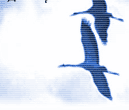Transparency and Accountability Mechanisms and Procedures Presidential Elections in Russia
(1) Composition of the CEC
The current CEC is comprised of 15 members, 5 of which are appointed by the State Duma, five appointed by the Federation Council, and five by the President. Those five appointed by the State Duma were nominated by factions within the State Duma, including the Communist Party, the Liberal Democratic Party, the Agrarian Party, Russia's Choice, and the New Regional Policy Group. As such, it is significantly more politically and institutionally diversified than in 1993, when all 21 commission members were appointed by Yeltsin. This change introduces the prospect for self-policing of the commission as well as its independence.
(2) Provision for Deliberative (consultative) Voting Members
Russian Law also provides the opportunity to each presidential candidate to appoint a «Deliberative Voting Members» to the registering commission (in the case of party list candidates for the State Duma and Presidential candidates, the highest level commission would by the CEC) and all subordinate commissions. This member enjoys the following rights : to be informed of all commission meetings in advance; to speak at meetings of the commission , make suggestions, and demand voting on issues; to ask questions of other participants of the session and receive answers to them; and to familiarize himself/herself with any documents and materials of that commission or subordinate commissions and receive certified copies thereof. Deliberative members are also included in commission «control groups» formed at every level to oversee the operation of the SAS as well as other internal working groups set up to monitor compliance with election regulations. One change in this institution since 1993 is that the deliberative member whose candidate wins the election retains his/her seat until the next election. For example, the four parties which surpassed the 5% threshold in the 1995 elections have retained their deliberative voting seats on the CEC, ie. Communist Party, LDPR, Yabloco, and Nash Dom.
(3) Institution of a Third Protocol of Results
Another novelty of the system since 1993 is the introduction of a third copy of the protocol of results. The first copy of the protocol along with complaints and dissenting opinions (and at higher level commissions summary tables of results) is forwarded to superior election commissions while the second copy along with certified copies of attachments is retained by the commission of origin until the conclusion of their work. The third copy (and, at superior level commissions, summary tables of results) has been introduced specifically for review by candidates' proxies, observers, deliberative voting members, representatives of the mass media, or any citizen of the Russian Federation upon his or her request. FAILURE to comply with this request now results in a punitive fine which ranges from 5 to 50 times the minimum monthly wage depending upon the level of commission at which the violation occurs. The fine is levied against the chairman of the commission which increases at each superior election commission. Upon request the commission is bound to provide a certified copy of the protocol.
(4) Provisions for Observers
Russian law allows for domestic partisan observers and international observers. Special instructions on the tabulation process also reinforce the right of candidate proxies and representatives of the mass media to be present for the tabulation of votes and completion of the officials protocol of results. According to the Basic Guarantees Law and the Presidential Election Law as well as CEC Explanation No. 79/643-II, accredited observers, candidate proxies, and journalists are entitled to monitor vote counts and completion of protocols of results at the precinct level and receive access to protocols at superior level election commissions. However, a recently passed CEC Resolution on the Uniform Procedure for Tabulation of Vote Returns specifically acknowledges the right of observers and journalists to be present for the counting aggregation , and protocol completion at all levels of election commissions. The CEC in public statements has also confirmed the right of observers to be present at all levels. The above mentioned resolution also instructs election officials to facilitate the task of observers by arranging tables for counting so that all those attending can see any actions of members of the PEC and to display for the public an enlarged copy of the protocol (or use a black board) to fill in data on vote returns.
(5) Reinstatement of Territorial Election Commissions
Another important change since 1993 is the re-introduction of the Territorial Election Commission. Second from the bottom in the election commission hierarchy, this layer was eliminated in 1993 without practical consideration of how 95,000 precincts could report to 225 district election commissions (in the case of parliamentary elections). As a result, «executive working groups» were hastily established in the closing weeks of the 1993 election campaign to aggregate results. Comprised of appointed executive authorities and their staffs, this link was largely autonomous from the formal election structure. In practice, there were virtually no mechanisms for access, or oversight, or - if necessary - punitive measures. TECs were reconstituted within the legal and institutional election framework for the 1995 elections and will aggregate votes from the PECs for the presidential elections. There are approximately 2,700 TECs, which will subsequently report their aggregate totals to 89 Subject Election Commissions (SECs).

|
